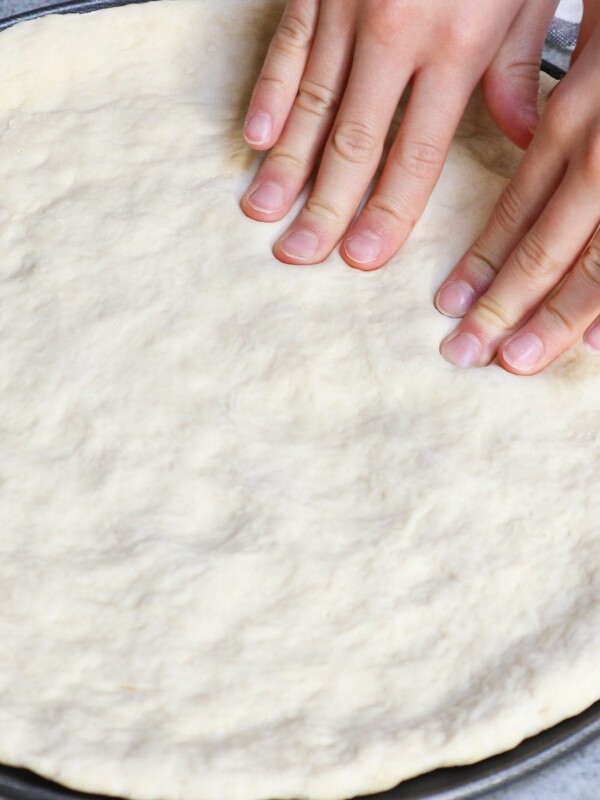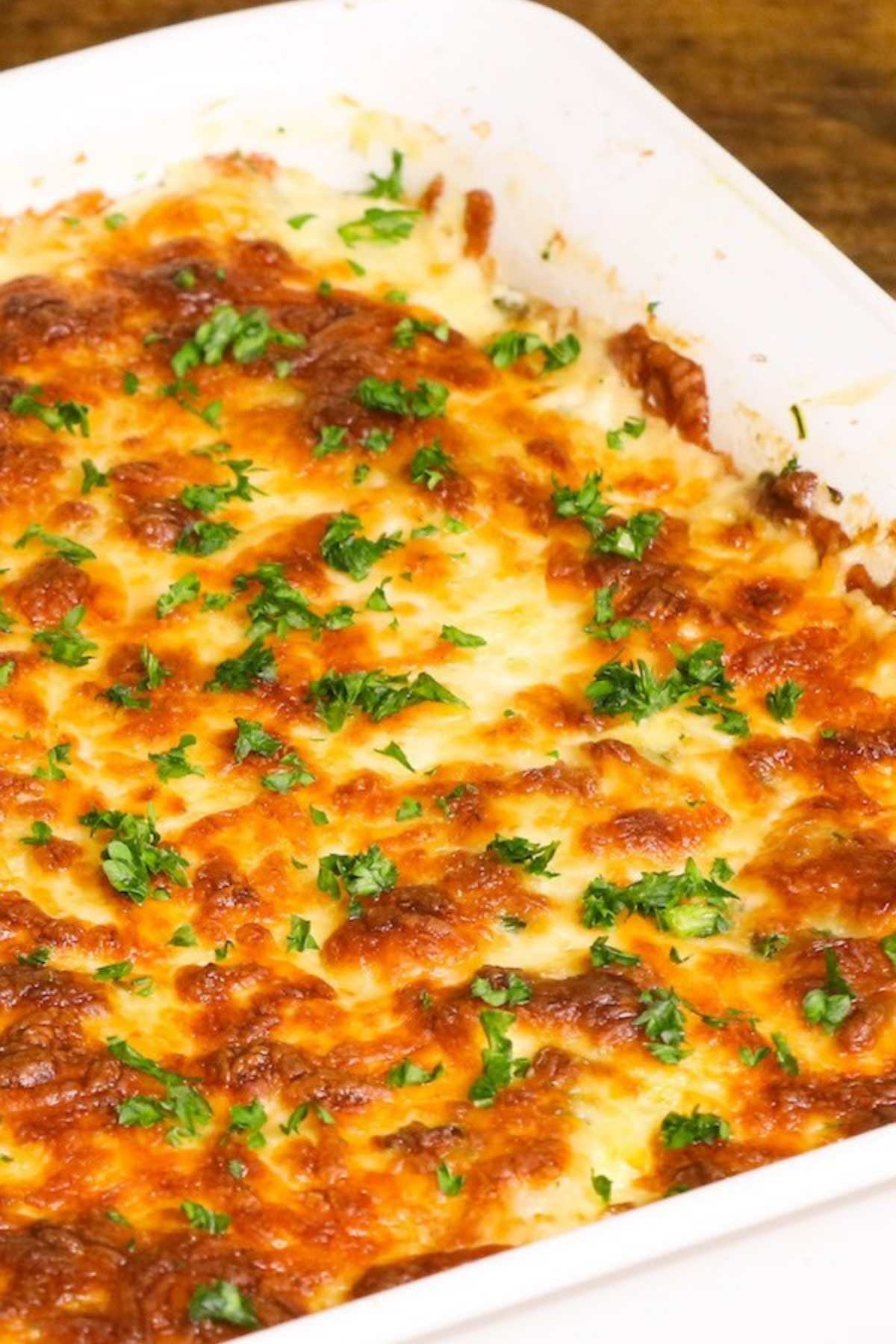What is Chow Mein and the Difference Between Chow Mein and Lo Mein Noodles
on Nov 30, 2022, Updated Nov 19, 2023
This post may contain affiliate links. Please read my disclosure policy.
Have you ever wondered what the difference between chow mein and lo mein is? Many people often think that the only way these two dishes contrast is with noodles that are used. While this is true, the other contributing difference is the way that they are cooked.
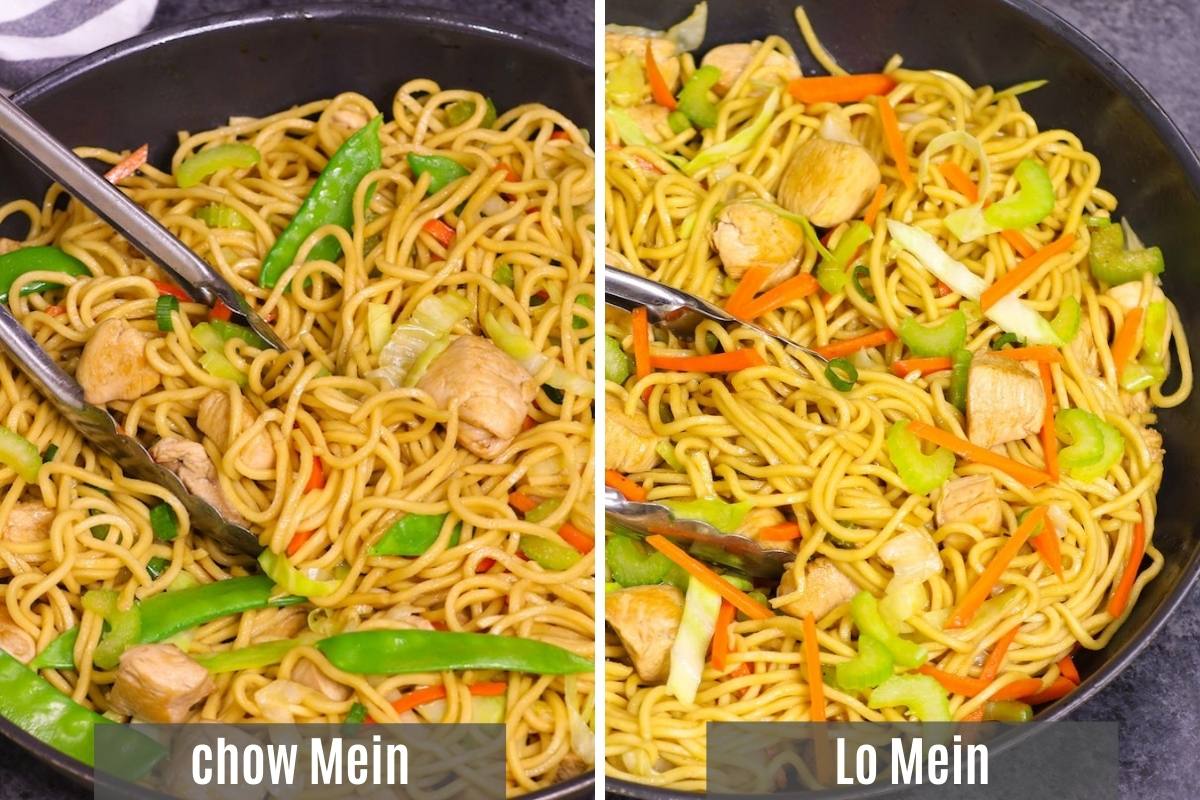
What is Chow Mein ?
Chow, meaning fried, or in this case fried noodles – is one of the more popular dishes in Chinese restaurants and take-outs around the world.
Also commonly known as twice-browned noodles, chow mein involves frying the noodles until they turn brown. However, you can also enjoy chow mein steamed or fried.
The crisped version of chow mein has a thick sauce that turns the dish brown, whereas the steam is simply mixed with soy sauce.
Types of Chow Mein
There are two main types of chow mein dishes:
- Steamed chow mein: Here the noodles are flash-fried and then stir-fried. During this process the noodles are tossed with meat, vegetables and a light sauce.
- Crisp chow mein: Crisp chow mein noodles are fried and pressed flat like a pancake. The meat, vegetables and sauce are then layered on top.
In both types, the noodles are the main focus of the dish. All of the extra vegetables, sauce and meats are kept to a minimum in order to not take away from the noodles. These additives are only placed on the noodles after the noodles have been boiled and fried in oil. This ultimately allows the chef to make the noodles the star of the show!
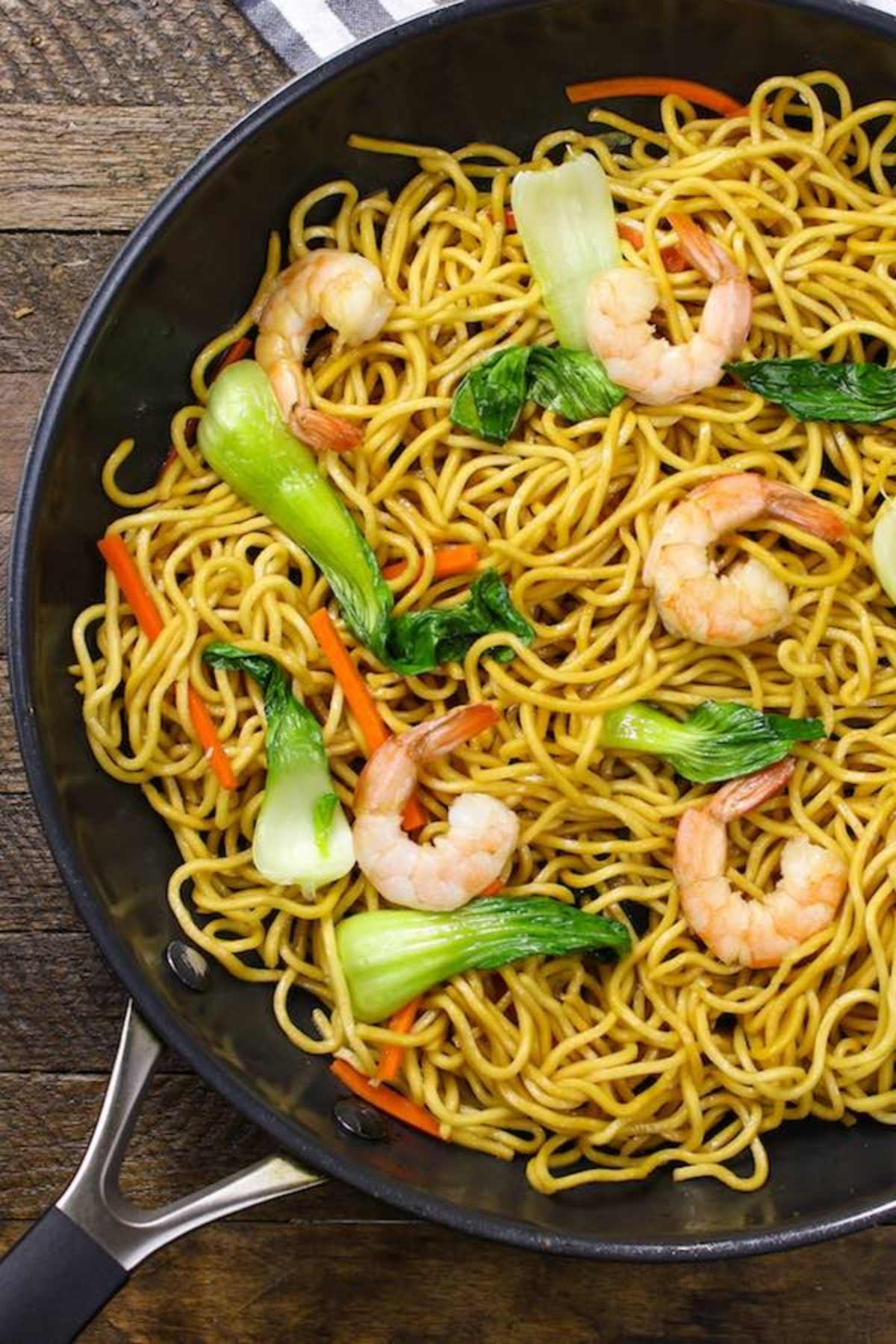
Tips for Identifying Chow Mein
- In crisp chow mein, the noodles are crispy.
- In steamed chow mein, the noodles are oil.
- There is a small amount of meat and vegetables involved.
- There is a light sauce that does not overpower the noodles flavor and texture.
- In the lo mein dish, vegetables and meat such as chicken, beef, pork, seafood or tofu are present – making it a dry variation of the traditional noodle soup.
Chow Mein Ingredients and Variations
Typically in the U.S., Chow mein is stir-fried and contains meat such as chicken, pork, or beef and onions, and celery.
If you’re a vegan or vegetarian, then substituting the meat with shrimp or tofu is perfectly acceptable. In fact, eating vegetarian chow mein is becoming more and more popular.
However, crispy chow mein often contains more onion and celery than traditional chow mein and is served strained. Whereas steamed is served with different vegetables that also include onions, carrots, celery, cabbage and mung bean sprouts.
On the East coast of the United States, chow mein is usually served crispy or called Hong Kong style and on the West coast is usually served steamed.

What is Lo Mein?
Lo mein on the other hand differs a bit. It’s a dish that focuses on tossed or mixed noodles. The term Lo is Cantonese, which means stirred noodles, but in Mandarin, the dish is called lāo miàn.
Lo Mein usually contains vegetables, meat and boiled noodles that are tossed with a sauce. The vegetarian dish will typically just have vegetables. This makes the low mein dish a variation of the traditional noodle soup. Oftentimes, the chef will drown this dish in a savory sauce to mimic soup. These cooked noodles are added to a wok containing various vegetables and proteins that have already been cooked and tossed in the lo mein sauce.
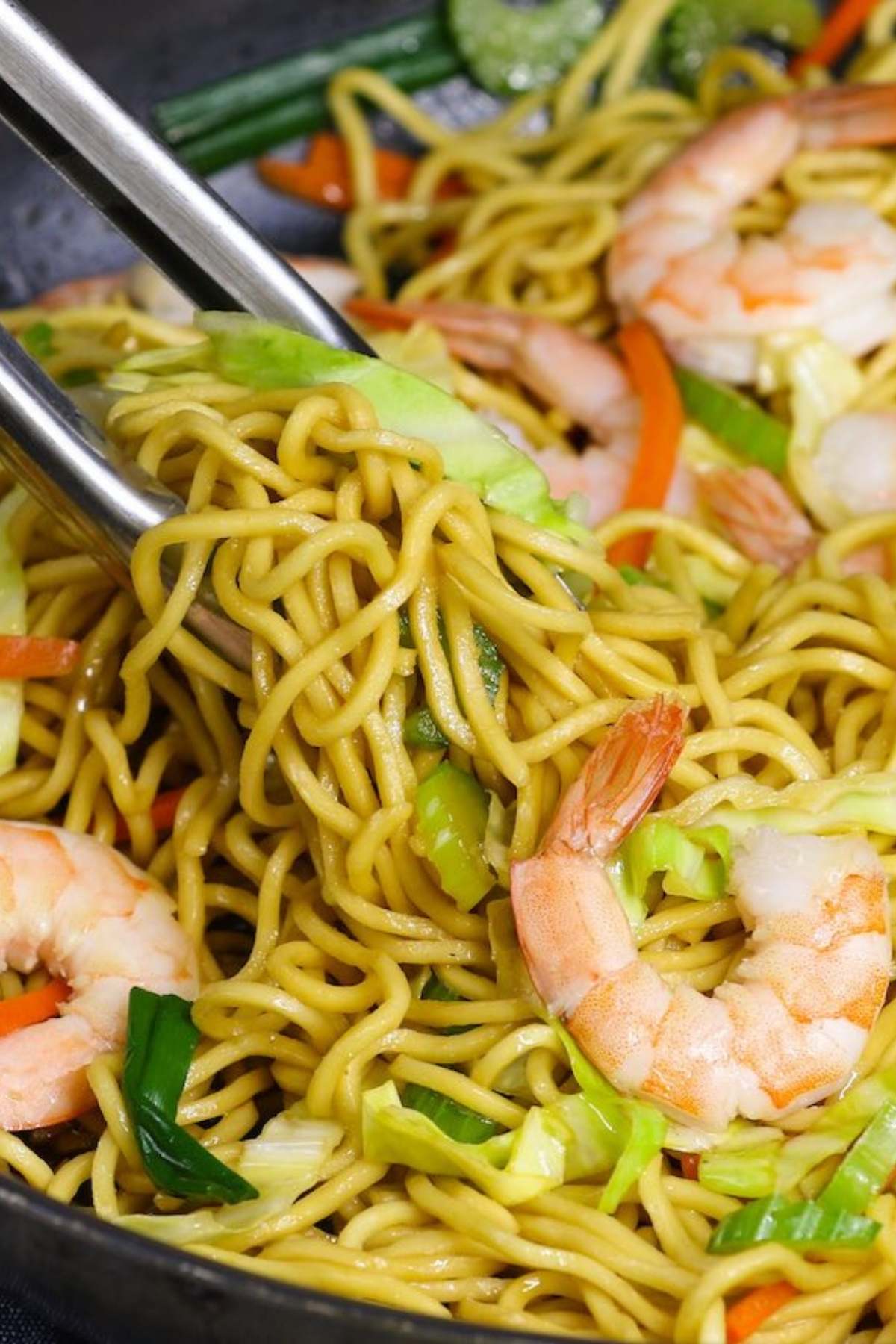
Are you unsure if you’re eating lo mein? Here’s how to tell:
- The dish is smothered in a lo mein sauce
- The noodles are not greasy.
- There are large amounts of vegetables and a specific meat
Lo Mein Ingredients and Variations
Lo mein is a popular dish in the US, and is often confused with Chow Mein.
American-Chinese Lo Mein differs from the traditional Cantonese Lo Mein. More specifically, in the U.S. the noodles are stir-fried with seasonings and soy sauce along with vegetables such as bok choy and cabbage, and a protein such as beef, chicken or pork.
It’s also very popular to see low mein variations such as Shrimp Lo Mein, Lobster Lo Mein, Vegetable Lo Mein, and “House” Lo Mein.
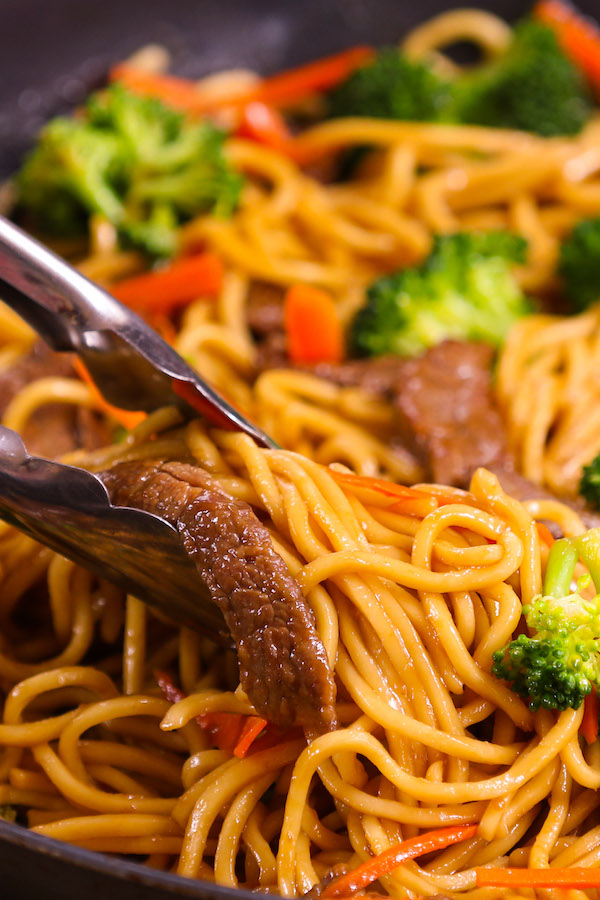
Are Lo Mein Noodles Hard or Soft?
Often cooked al dente, lo mein noodles are often soft. The noodles used are egg noodles, which can be found in the fresh section of the grocery store.
Chow Mein Vs Lo Mein Noodles
- The cooking method: The cooking methods for chow mein and lo mein differ slightly. Chow mein noodles are softened in hot water and then stir-fried. Lo mein noodles are completely cooked before getting mixed in with the meat, vegetables and sauce.
- The wok technique: The wok method provides both noodle dishes with an incredible taste. To make chow mmein noodles, you use a small amount of oil in a hot work and lightly fry. For the lo mein, the noodles are cooked beforehand and then tossed in the wok with the rest of the ingredients.
- The sauce: Chow mein uses a delicate sauce that is light or uses none at all. Lo mein is a dish that requires a more rich sauce for its flavor.
- The texture: Chow mein noodles are crunchier than lo mein noodles, particularly due to the way they are cooked. Lo mein noodles are smoother and have a more chewy texture.
Does Chow Mein Taste Like Lo Mein?
While both dishes have similarities, they still have their differences. Taste is one of them. If you prefer something with a bit more of a crisp, then Chow mein is for you. However, if you prefer something chewy and saucy, then go with Lo mein. While they may look quite similar, the difference is in the bite.
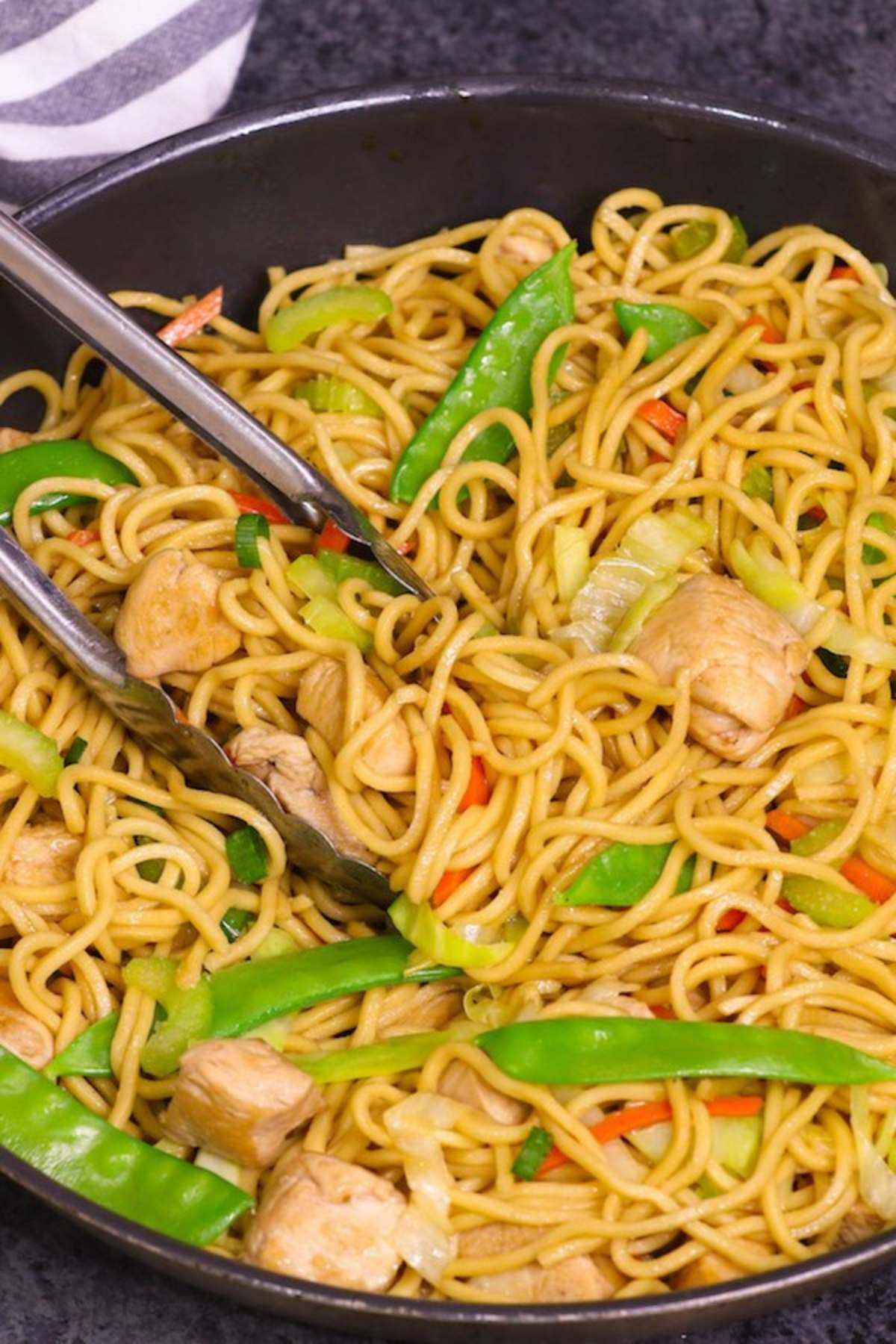
Chow Mein vs Lo Mein: Which Is Better?
The choice is yours here! It’s simply about personal taste. Some prefer the crunch of the dried egg noodles in chow mein, whereas some prefer the chewiness in lo mein.
Sometimes your choice will be dependent on the other ingredients involved. Think about pairing your crispy noodles with soft ingredients like mushrooms, and the soft noodles with crunchy ingredients like carrots and celery. Your noodle texture choice will often depend on your other ingredients.
Nutritional Value
When looking at the nutritional value of both of these dishes, lo mein wins! This is simply because chow mein is fried, causing a higher fat count. However, both Lo Mein and Chow Mein provide a source of fat, carbs, and proteins.
Chow Mein Recipes
Lo Mein Recipes
You May Also Like
- Korean Jajangmyeon Instant Black Bean Noodles
- How to Make Hibachi Noodles
- Pad Woon Sen (Thai Glass Noodles Stir Fry Recipe)
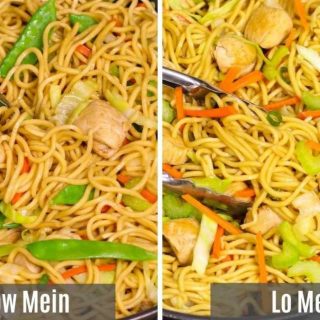
Chow Mein vs Lo Mein (How to Make Chow Mein and Lo Mein)
Ingredients
Chicken Chow Mein
- 1 pound chicken breast, cubed
- 8 oz chow mein noodles
- 1 tbsp vegetable oil
- 1/2 tsp ginger, minced
- 1 tbsp garlic, minced
- 1 medium carrot, sliced thin
- 1 stalk celery, sliced thin
- 2 cups snow peas
- 1/4 cup soy sauce
- 2 tbsp oyster sauce
- 1 tbsp Chinese cooking wine, or sherry
- 2 tbsp sugar
Chicken Lo Mein
- 1 pound chicken breast, cubed
- 8 oz lo mein noodles
- 1 tbsp vegetable oil
- 1/2 tsp ginger, minced
- 1 tbsp garlic, minced
- 1 medium carrot, thinly sliced
- 1 stalk celery sliced thin
- 1/4 cup soy sauce
- 2 tbsp oyster sauce
- 1 tbsp Chinese cooking wine, or sherry
- 2 tbsp sugar
Instructions
Chicken Chow Mein
- Prepare the noodles according to the package directions. Meanwhile, make the chow mein.
- In a medium bowl, mix soy sauce, oyster sauce, sugar and cooking wine. Reserve.
- Place a large skillet over medium-high heat. Add the oil followed by the cubed chicken pieces.
- Saute for 1 minute per side until golden.
- Add the minced garlic, ginger and carrots. Stir fry for about 4 minutes until tender.
- Add the snow peas and stir fry 2 more minutes.
- Drain the noodles and add them to the chicken/vegetable mixture.
- Add the chow mein sauce and toss to coat evenly. Serve hot and enjoy!
Chicken Lo Mein
- Prepare the noodles according to the package directions. Meanwhile, make the chicken and vegetables.
- In a medium bowl, mix soy sauce, oyster sauce, sugar and cooking wine. Reserve.
- Place a large skillet over medium-high heat. Add the oil followed by the cubed chicken.
- Saute for 1 minute per side until lightly golden and no longer pink.
- Add the minced garlic, ginger and carrots. Stir fry for about 4 minutes until tender.
- Add the snow peas and stir fry 2 more minutes.
- Drain the noodles and add them to the chicken/vegetable mixture.
- Add the lo mein sauce and toss to coat evenly. Serve hot and enjoy!
Nutrition information provided is an estimate only and will vary based on ingredient brands and cooking methods used.


